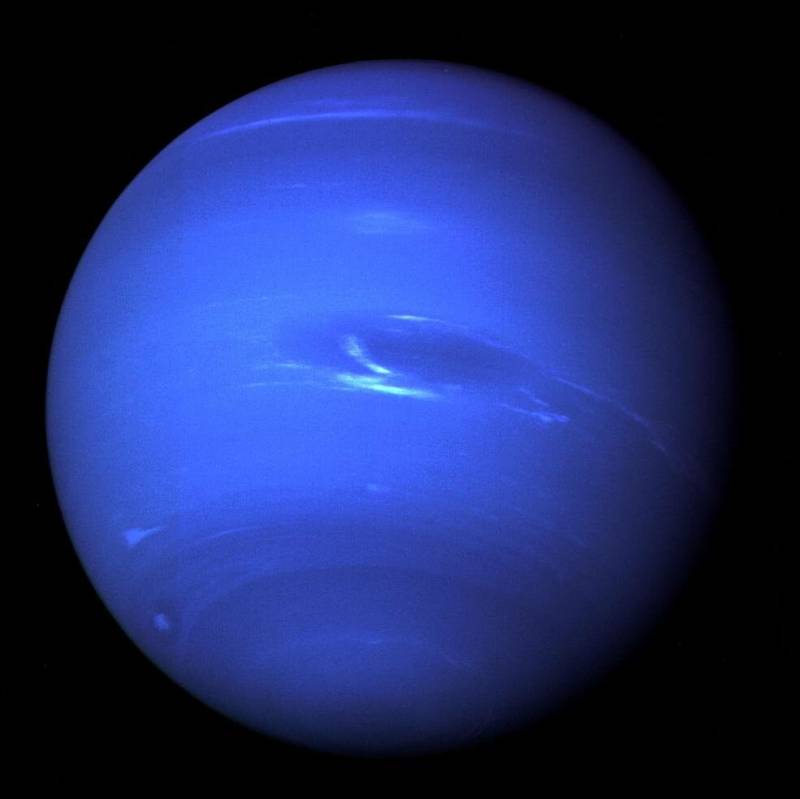Neptune typically appears blue, attributed to methane in the atmosphere, but pictures from Webb’s infrared camera show the planet whiter in color. The new photo shows thin lines of beautiful light around Neptune, which NASA says are high-altitude methane-ice clouds reflecting sunlight.
 Neptune typically appears blue in photographs due to methane gas in the atmosphere. This image of the ice giant was taken in 1989 by the Voyager 2, the only spacecraft to travel to the planet. (NASA)
Neptune typically appears blue in photographs due to methane gas in the atmosphere. This image of the ice giant was taken in 1989 by the Voyager 2, the only spacecraft to travel to the planet. (NASA)
One of Neptune’s moons, Triton, can also be seen in the photo. But, because of diffraction spikes in the image, one could easily mistake it for a distant star. Triton’s surface is covered in frozen, condensed nitrogen, which reflects an average of 70% of the sun’s rays, NASA said.
The image of the rings is the crispest seen since 1989, when NASA’s Voyager 2 became the first spacecraft to cruise by Neptune, located approximately 2.8 billion miles from Earth — more than 30 times the distance from Earth to the sun.
Neptune is the most distant planet in our solar system (Pluto was demoted to a dwarf planet in 2006), taking 165 Earth years to complete its orbit. Interestingly, a day on Neptune is only 16 hours long, according to NASA.


9(MDAxOTAwOTE4MDEyMTkxMDAzNjczZDljZA004))


















